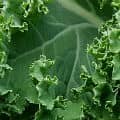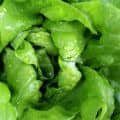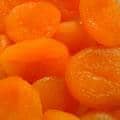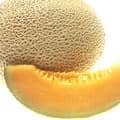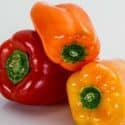from The George Mateljan Foundation World’s Healthiest Foods
World’s Healthiest Foods rich in zinc
FoodCalsDRI/DV
For serving size for specific foods see the Nutrient Rating Chart.
Basic Description
From a food standpoint, zinc may be a less familiar dietary mineral than iron or calcium or sodium, but it is no less important to our metabolism or our health. Like magnesium, zinc is used as a cofactor by a number of critical enzymes. (This “cofactor” status of zinc means that zinc participates directly in the activity of the enzymes.) In fact, more than 300 zinc-dependent enzymes are currently known. Even a mild dietary deficiency of zinc can have far-reaching health implications. Immunity, reproduction, skin health, and vision are just some of the areas that can be affected.
The importance of this mineral to multiple body systems makes it even more important for us to get an adequate amount of zinc in our daily diet. This task can be a very challenging one. Although there is some amount of zinc in all WHFoods, no individual food ranks as an excellent source of this mineral. Only five foods rank as very good sources, and 24 foods rank as good sources of zinc. If you are seeking to increase your dietary intake of zinc, this limited number of ranked foods means that you cannot count on any particular food to obtain your 11 milligrams of daily zinc. (This is the amount that constitutes the DRI, or Dietary Reference Intake level for this mineral.) Instead, you’ll need to depend on the many different WHFoods groups and diversity in your meal plan. Our Summary of Food Sources section will provide you with additional recommendations in this area.
Like sodium and potassium, or calcium and magnesium, zinc and copper have overlaps in transport and metabolism. For this reason, balancing dietary zinc and copper sources may help prevent deficiency or excess of either mineral.
Role in Health Support
Immune Function
Diets low in zinc can induce measureable reductions in the activity of the immune system. These reductions occur relatively quickly—in as few as four weeks after starting a low-zinc diet—and are reversible upon getting zinc back into the body.
This experimental low-zinc diet only contained 2-3.5 milligrams of zinc per day, or less than you would have in a single serving of our Mediterranean-Style Salad.
It appears that elderly individuals are especially prone to developing reduced immunity related to poor zinc nutrition. Even in this at-risk population, restoring zinc status appears to reverse the detrimental changes within weeks.
One research group has gone so far as to recommend using a Mediterranean-style diet—a diet very similar to the World’s Healthiest Foods approach—to protect against zinc deficiency in elderly individuals. We couldn’t agree more.
Skin Health
Researchers have been able to induce acne symptoms in young men by feeding them diets deficient in zinc. This effect occurs surprisingly quickly, with one research group demonstrating a significant change in skin health within 12 days of depleted zinc foods. Other researchers have been able to demonstrate a number of other skin and related symptoms, including facial rash, foot fungus, and canker sores. Again, each of these changes was reversed when zinc was brought back into the diet. While we don’t want to overgeneralize about the significance of this study—and are by no means saying that most acne is caused by zinc deficiency—it does suggest that too little zinc from a meal plan can be a factor in compromising skin health, and that it’s worthwhile building your zinc intake up to recommended levels in order to support the health of your skin.
Sensory Organs
Acute depletion of zinc can causes loss of the sense of taste and appetite. The level of zinc deficiency necessary to cause these changes appears to be more severe than the immune system changes reported above, and is often related to another factor such as cancer treatment or anorexia. One research group recently estimated that about 15% of elderly people who lost their sense of taste did so due to zinc deficiency, and some others did so due to more serious conditions; so make sure to report this symptom to your doctor if you develop it.
Like the other symptoms related to zinc deficiency, this change in sense of taste appears to be reversible in the majority of people who get back to normal zinc status. Here are a couple of recipes—Braised Red Curry Lamb and Vegetables as well as Healthy Chef’s Salad with Walnuts and French Dressing—that should help to combat zinc-related loss of sense of taste, both by acting as good sources of zinc, and by including a good zing of spices.
Zinc is also critical to vision. It works together with vitamin A to help sense light and to send nerve impulses to the brain. Although we don’t currently know how much of age-related vision loss is due to zinc deficiency, researchers have shown that zinc levels in the retina (the part of the eye that sees light) decline in tandem with vision loss.
Male Reproductive Health
Advanced deficiency of zinc can impair motility and number of sperm. In one study, young male volunteers ate a diet with only 10% of the Daily Value requirement (15 milligrams) for a little over a month. Researchers measured sperm quality and quantity before and after the zinc-deficient diet.
This study demonstrated that even brief periods of severe zinc deficiency can lead to measureable changes in sperm composition and quantity. Studies correlating diseases known to impair zinc nutrition with reduced fertility seem to second this conclusion. Here’s a recipe—our 7-Minute Sautéed Crimini Mushroom—rich in zinc and selenium, another nutrient necessary for proper sperm production.
Summary of Food Sources
The most well-known fact about zinc in foods is almost certainly that oysters are rich in zinc. A typical oyster weighing approximately one ounce will contain about 8-9 milligrams of zinc. So two oysters would put you over the WHFoods recommended daily amount of 11 milligrams. In addition to oysters, other shellfish tend to be rich in this mineral, as are many other animal foods. Shrimp, for example, rank as our 10th best WHFoods source of zinc. And our Oyster and Clam Chowder recipe contains more than 400% of the DRI for zinc.
Statistically, red meat and poultry make up the biggest contributions to zinc intake in the diets of Americans. However, this statistic is somewhat misleading, since the two animal meats are quite different in their concentration of zinc. Grass-fed beef ranks as our top WHFoods source of zinc with 1 milligram in every ounce. However, pasture-raised chicken only ranks as our 44th best source of zinc, with only one-quarter milligram per ounce. (The reason that poultry makes such a large zinc contribution in U.S. diets is due to the large volume of poultry that we eat.) The bottom line here: if you enjoy both beef and chicken in your meal plan but want to focus on your intake of zinc, beef is your better option. Fish—including scallops and shrimp—are both good sources of zinc. After beef, our best WHFoods land animal source of zinc is lamb.
It is also true that many nuts and seeds are rich in zinc. Sesame seeds and pumpkin seeds, for example, rank in our Top 10 WHFoods sources for this mineral! And cashews are not far behind at our 11th best source. These nuts and seeds also provide the largest amounts of zinc to our 7-Day Healthiest Way of Eating Plan. For people eating a largely plant-based diet, these sources will be necessary on a daily basis to ensure a consistent intake of zinc. Shiitake mushrooms,crimini mushrooms, spinach, and asparagus are examples of very good plant-food sources of zinc. Among our WHFoods whole grains, quinoa and oats are you best zinc sources.
For most nutrients, there are a few food sources that stand out as providing most of a day’s supply. Other than oysters, this is not true for zinc. Because of this, you’ll need to have multiple contributors most days to reach your recommended intake level. With 38 of our World’s Healthiest Foods containing at least 1 milligram of zinc, you’ll have a wide variety of items to choose from to make sure you meet your goal.
Nutrient Rating Chart
Introduction to Nutrient Rating System Chart
In order to better help you identify foods that feature a high concentration of nutrients for the calories they contain, we created a Food Rating System. This system allows us to highlight the foods that are especially rich in particular nutrients. The following chart shows the World’s Healthiest Foods that are either an excellent, very good, or good source of zinc. Next to each food name, you’ll find the serving size we used to calculate the food’s nutrient composition, the calories contained in the serving, the amount of zinc contained in one serving size of the food, the percent Daily Value (DV%) that this amount represents, the nutrient density that we calculated for this food and nutrient, and the rating we established in our rating system. For most of our nutrient ratings, we adopted the government standards for food labeling that are found in the U.S. Food and Drug Administration’s “Reference Values for Nutrition Labeling.” Read more background information and details of our rating system.
World’s Healthiest Foods ranked as quality sources of
zinc |
| Food |
Serving
Size |
Cals |
Amount
(mg) |
DRI/DV
(%) |
Nutrient
Density |
World’s
Healthiest
Foods Rating |
| Beef |
4 oz |
132.7 |
4.09 |
37.18 |
5.0 |
very good |
| Spinach |
1 cup |
41.4 |
1.37 |
12.45 |
5.4 |
very good |
| Asparagus |
1 cup |
39.6 |
1.08 |
9.82 |
4.5 |
very good |
| Mushrooms, Shiitake |
0.50 cup |
40.6 |
0.96 |
8.73 |
3.9 |
very good |
| Mushrooms, Crimini |
1 cup |
15.8 |
0.79 |
7.18 |
8.2 |
very good |
| Lamb |
4 oz |
350.4 |
3.87 |
35.18 |
1.8 |
good |
| Sesame Seeds |
0.25 cup |
206.3 |
2.79 |
25.36 |
2.2 |
good |
| Pumpkin Seeds |
0.25 cup |
180.3 |
2.52 |
22.91 |
2.3 |
good |
| Garbanzo Beans |
1 cup |
269.0 |
2.51 |
22.82 |
1.5 |
good |
| Lentils |
1 cup |
229.7 |
2.51 |
22.82 |
1.8 |
good |
| Cashews |
0.25 cup |
221.2 |
2.31 |
21.00 |
1.7 |
good |
| Quinoa |
0.75 cup |
222.0 |
2.02 |
18.36 |
1.5 |
good |
| Turkey |
4 oz |
166.7 |
1.95 |
17.73 |
1.9 |
good |
| Shrimp |
4 oz |
134.9 |
1.85 |
16.82 |
2.2 |
good |
| Tofu |
4 oz |
164.4 |
1.78 |
16.18 |
1.8 |
good |
| Scallops |
4 oz |
125.9 |
1.76 |
16.00 |
2.3 |
good |
| Green Peas |
1 cup |
115.7 |
1.64 |
14.91 |
2.3 |
good |
| Oats |
0.25 cup |
151.7 |
1.55 |
14.09 |
1.7 |
good |
| Yogurt |
1 cup |
149.4 |
1.45 |
13.18 |
1.6 |
good |
| Beet Greens |
1 cup |
38.9 |
0.72 |
6.55 |
3.0 |
good |
| Summer Squash |
1 cup |
36.0 |
0.70 |
6.36 |
3.2 |
good |
| Broccoli |
1 cup |
54.6 |
0.70 |
6.36 |
2.1 |
good |
| Swiss Chard |
1 cup |
35.0 |
0.58 |
5.27 |
2.7 |
good |
| Brussels Sprouts |
1 cup |
56.2 |
0.51 |
4.64 |
1.5 |
good |
| Miso |
1 TBS |
34.2 |
0.44 |
4.00 |
2.1 |
good |
| Parsley |
0.50 cup |
10.9 |
0.33 |
3.00 |
4.9 |
good |
| Sea Vegetables |
1 TBS |
10.8 |
0.33 |
3.00 |
5.0 |
good |
| Tomatoes |
1 cup |
32.4 |
0.31 |
2.82 |
1.6 |
good |
| Bok Choy |
1 cup |
20.4 |
0.29 |
2.64 |
2.3 |
good |
World’s Healthiest
Foods Rating |
Rule |
| excellent |
DRI/DV>=75% OR
Density>=7.6 AND DRI/DV>=10% |
| very good |
DRI/DV>=50% OR
Density>=3.4 AND DRI/DV>=5% |
| good |
DRI/DV>=25% OR
Density>=1.5 AND DRI/DV>=2.5% |
Impact of Cooking, Storage and Processing
Like other minerals, zinc in foods is remarkably stable to shelf storage. In fact, your foods will go bad long before the zinc content changes in any relevant way. But because many of the zinc-rich foods (meats, shellfish, and seeds, for instance) have such a limited shelf life for other reasons (like risk of bacterial contamination), you’ll want to be careful in the way you store them.
Cooking meat does not lead to dramatic loss of zinc. So unlike some other minerals—for example, potassium—you don’t need to be concerned here about losing too much zinc if you enjoy cooked meats in your meal plan. (And by the way, we do not recommend consumption of raw meat due to contamination risk.)
In plant foods, you can expect some zinc loss in cooking liquids, but this loss tends to be less than that seen with most other minerals. For example, boiled lentils lose about 10-20% of their zinc content. While this loss is not exactly irrelevant, in a practical sense, this still leaves lentils as a good source of dietary zinc (and given that lentils generally are not eaten raw you can know that by preparing them you are still enjoying a zinc-rich food).
Soaking beans, seeds, and grains for several hours, then allowing sprouts to form, may significantly improve zinc bioavailability from these foods.
Risk of Dietary Deficiency
While the average U.S. diet provides adequate zinc for most men and women, symptomatic zinc deficiency does sometimes occur in the U.S. Unlike for many of the other minerals, however, the beef-rich diet of many Americans (averaging about 1 pound of beef per week) tends to provide zinc in good supply. Not only beef, but other animal meats, provide us with substantial amounts of zinc, including grass-fed lamb and pasture-raised turkey. Perhaps the biggest risk of zinc deficiency in a healthy adult would occur in a person who consumed few animal foods and whose diet was largely based on processed foods, with no routine intake of nuts, seeds, fresh vegetables, or whole grains.
On average, U.S. children have sufficient intake of zinc. By the DRI standard described below, less than 5% of children in any age group are currently eating zinc-deficient diets.
While the above statistic might sound like good news, it isn’t because children appear to be depending more and more on fortified foods—foods with extra added zinc in processing—rather than meeting their zinc needs from whole, natural foods. For example, ready-to-eat processed cereals have become an important source of zinc in kids’ diets. This trend has three unwanted results. First, it leaves kids lacking in nutrients that are naturally present alongside of zinc in whole foods. Second, it leaves kids with imbalanced intake of zinc in relationship to other nutrients (like copper). And third, it puts kids at risk of excess zinc intake due to overconsumption of fortified processed foods. According to present-day research, nearly 90% of children under age 1, and 50% of those aged 1-3 years, eat more than the age appropriate upper limit of zinc daily.
Vegetarian diets tend to be a bit lower in zinc than diets that contain meat. Still, this difference is not as great as you might predict from looking at the food source lists below. According to a 2013 review of previously published research, vegetarians on average eat just under 1 mg of zinc less than meat-eaters in their daily diets. If you eat a largely or fully vegetarian diet, including seeds on a daily basis might be a good step toward ensuring good zinc nutrition.
Other Circumstances that Might Contribute to Deficiency
In addition to poor dietary supply, increased need for zinc (beyond our typical everyday needs) can also contribute to a relative deficiency of this nutrient. Infections, trauma, stress, and steroid medications are just some of the examples of situations where body tissues take up extra zinc from the blood, creating a relative deficiency.
Serious gastrointestinal problems can impair the ability to absorb zinc from foods. For example, more than half of people with an inflammatory bowel disorder called Crohn’s disease have evidence of zinc deficiency. If you have inflammatory bowel disease, you’ll probably need some help from a doctor or nutritionist to ensure good vitamin and mineral intake.
Our bodies are able to somewhat compensate for a very low zinc intake by reducing the amount of the mineral lost in the urine and feces. People with kidney or bowel diseases may not be as equipped to respond to temporarily low-zinc diets as people with normal organ function.
Relationship with Other Nutrients
Too much zinc in the diet or from dietary supplements can impair copper nutrition. This interaction can occur in two ways. First, copper and zinc may directly compete for absorption from our gastrointestinal tract. Second, diets high in zinc may lead to overproduction of a protein called metallothionein, a protein that binds both copper and zinc. This second type of interaction might turn out to be the most important type in this arena.
The takeaway message here is probably two-fold. First, focus on foods that are strong sources of both copper and zinc. Sesame seeds and pumpkin seeds would be good examples of these. Secondarily, using high doses of zinc supplements to circumvent the difficulty in finding good food sources may do as much or more harm as good.
Phytate—a phosphorus-rich molecule that may provide us with health benefits well beyond its phosphorus content—is also a molecule that can inhibit absorption of dietary zinc. (Phytate can inhibit the absorption of other minerals as well, including iron.) While phytate can be broken down in our large intestine by naturally occurring bacteria, it may not be a good thing to have too much zinc bound together with phytate, since zinc is typically absorbed from our digestive tract much earlier during the process of digestion. If too much zinc remains bound to phytate before the two can be separate, we may not be able to absorb as much zinc as would otherwise be desirable. As discussed earlier in this profile, sprouting grains and legumes may help reduce phytate levels to a significant degree. We would like to point out, however, that there is no research to suggest that consumption of non-sprouted whole grains and legumes in a balanced diet increases a person’s risk of zinc deficiency.
Risk of Dietary Toxicity
The major risk associated with excessive zinc intake is that you will crowd out the ability to absorb other important minerals. In particular, high zinc intakes impair absorption of copper, a nutrient we already struggle to obtain from our diets. Reduced copper absorption, in turn, can lead to anemia and a resulting fatigue.
Fortunately, it appears that all the published cases of excessive zinc intake involve either a nutritional supplement or a related non-dietary exposure (denture creams, for instance, can contain excessive amounts of zinc). It would be theoretically possible to obtain too much dietary zinc by eating several oysters every day, but this has never been reported to be a problem in published research studies, perhaps because oysters are also rich in the other minerals that compete with zinc for absorption.
There is a Tolerable Upper Intake Level (UL) set for zinc by the Institute of Medicine at the National Academy of Sciences of 40 milligrams per day. The basis for this recommended limit involved research on enzyme activity in red blood cells. (The enzymes required a special balance between copper and zinc to function properly, and too much zinc upset this balance.) As described earlier, a good balance of zinc and copper in food might be able to help offset possible problems even if zinc intake regularly exceeded the UL. It is always worth remembering that ULs set by the National Academy of Sciences refer to regular intake of nutrients on a routine basis, not occasional intake every once in a while.
Disease Checklist
- Common cold
- Acne vulgaris
- Down syndrome
- Canker sores
- Liver disease
- Ulcer
- Diabetes
- Depression
- Macular degeneration
- Infertility (male)
Public Health Recommendations
The 1999 Dietary Reference Intake (DRI) levels for zinc as established by the National Academy of Sciences are as follows:
- 0-6 months: 2 mg
- 7-12 months: 3 mg
- 1-3 years: 3 mg
- 4-8 years: 5 mg
- 9-13 years: 8 mg
- 14-18 years, female: 8 mg
- 14-18 years, male: 11 mg
- 19+ years, female: 8 mg
- 19+ years, male: 11 mg
- Pregnant women, 14-18 years: 12 mg
- Pregnant women, 19+ years: 11 mg
- Lactating women, 14-18 years: 13 mg
- Lactating women, 19+ years: 12 mg
All of the DRI recommendations above are Recommended Dietary Allowances (RDAs), except the recommendation for 0-6 month old infants, which is an AI (Adequate Intake) recommendation. (AI intake recommendations are somewhat less precise than RDA recommendations.)
The Daily Value (DV) for zinc is 15 mg per day for adults and children older than 4 years. DVs are the standards used on food packaging labels.
The National Academy of Sciences has set a Tolerable Upper Intake Level (UL) for zinc intake at 40 mg per day for adults. As noted in the toxicity section above, it would be very unusual to consistently be above this threshold by dietary intake alone.
As our WHFoods recommendation level for zinc, we chose the DRI standard for males 14 years and older of 11 milligrams. With the exception of pregnancy and lactation, this level covers the needs of females 14 years and older as well.
References
- Alaimo K, McDowell MA, Briefel RR, et al. Dietary intake of vitamins, minerals, and fiber of persons ages 2 months and over in the United States: Third National Health and Nutrition Examination Survey, Phase 1, 1988-91. Advance Data 1994;258:1-28.
- Aliani M, Udenigwe CC, Girgih AT, et al. Zinc deficiency and taste perception in the elderly. Crit Rev Food Sci Nutr 2013;53:245-50.
- American Dietetic Association, Dietitians of Canada. Position of the American Dietetic Association and Dietitians of Canada: Vegetarian Diets. J Am Diet Assoc 2003;103:748-65.
- Arsenault JE, Brown KH. Zinc intake of US preschool children exceeds new dietary reference intakes. Am J Clin Nutr 2003;78:1011-7.
- Bae YS, Hill ND, Bibi Y, et al. Innovative uses for zinc in dermatology. Dermatol Clin 2010;28;587-97.
- El-Tawil AM. Zinc deficiency in men with Crohn’s disease may contribute to poor sperm function and male infertility. Andrologia 2003;35:337-41.
- Erie JC, Good JA, Butz JA, et al. Reduced zinc and copper in the retinal pigment epithelium and choroid in age-related macular degeneration. Am J Ophthalmol 2009;147:276-82.
- Foster M, Chu A, Petocz P, et al. Effect of vegetarian diets on zinc status: a systematic review and meta-analysis of studies in humans. J Sci Food Agric 2013;93:2362-71.
- Gerber N, Scheeder MRL, Wenk C. The influence of cooking and fat trimming on the actual nutrient intake from meat. Meat Science 2009;81:148-54.
- Grahn BH, Paterson PG, Gottschall-Pass KT, et al. Zinc and the eye. J Am Coll Nutr 2001;20:S106-18.
- Haros M, Carlsson NG, Almgren A, Larsson-Alminger M, Sandberg AS, & Andlid T (2009). Phytate degradation by human gut isolated Bifidobacterium pseudocatenulatum ATCC27919 and its probiotic potential. International journal of food microbiology, 135 (1), 7-14 PMID: 19674804
- Haros M, Bielecka M, Honke J, & Sanz Y (2007). Myo-inositol hexakisphosphate degradation by Bifidobacterium infantis ATCC 15697. International journal of food microbiology, 117 (1), 76-84 PMID: 17462768
- Hunt CD, Johnson PE, Herbel J, et al. Effects of dietary zinc depletion on seminal volume and zinc loss, serum testosterone concentrations, and sperm morphology in young men. Am J Clin Nutr 1992;56:148-57.
- Imoscopi A, Inelmen EM, Sergi G, et al. Taste loss in the elderly: epidemiology, causes and consequences. Again Clin Exp Res 2012;24:570-9.
- Institute of Medicine, Food and Nutrition Board. Dietary Reference Intakes for Vitamin A, Vitamin K, Arsenic, Boron, Chromium, Copper, Iodine, Iron, Manganese, Molybdenum, Nickel, Silicon, Vanadium, and Zinc. Washington, DC: National Academy Press, 2001.
- Kahmann L, Uciechowski P, Warmuth S, et al. Effect of improved zinc status on T helper cell activation and TH1/TH2 ratio in healthy elderly individuals. Biogerontology 2006;7:429-35.
- King JC. Zinc: an essential but elusive nutrient. Am J Clin Nutr 2011;94:679S-84S.
- Maserejian NN, Hall SA, McKinlay JB. Low dietary or supplemental zinc is associated with depression symptoms among women, but not men, in a population-based epidemiological survey. J Affect Disord 2012;136:781-8.
- Mocchegiani E, Romeo J, Malavolta M, et al. Zinc: dietary intake and impact of supplementation on immune function in elderly. Age 2013;35:839-60.
- Solomons NW. Mild human zinc deficiency produces an imbalance between cell-mediated and humoral immunity. Nutr Rev 1998;56:27-8.
- Taylor CM, Goode HF, Aggett PJ, et al. Symptomatic zinc deficiency in experimental zinc deprivation. J Clin Pathol 1992;45:83-4.
- Wang N, Hatcher DW, Toews R, et al. Influence of cooking and dehulling on nutritional composition of several varieties of lentils (Lens culinaris). LWT Food Sci Technol 2009;42:842-8.
- Wang N, Hatcher DW, Tyler RT, et al. Effect of cooking on the composition of beans (Phaseolus vulgaris L.) and chickpeas (Cicer arietinum L.). Food Res Int 2010;43:589-94.


